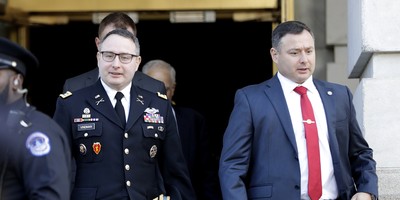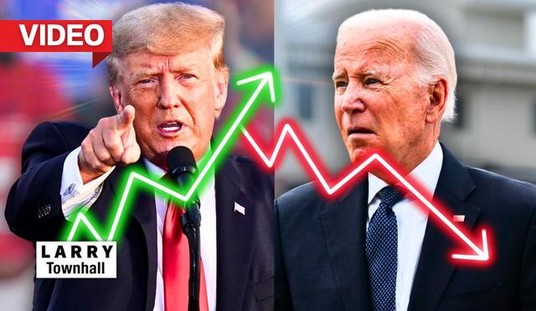When President Obama ultimately signed the Health Care and Education Reconciliation Act -- one of the two bills comprising Obamacare -- he gave a speech celebrating one of its surprises: language that terminated the Federal Family Education Loan (FFEL) program that allowed federally guaranteed student loans to be made in the private sector with private capital, thus giving the Federal Direct Student Loan (DL) program a monopoly over these loans.
As the Congressional Research Service has put it, this program makes the U.S. Treasury a "banker" for college students.
"The DL program uses a different administrative structure and draws on a different source of capital than was used in the FFEL program," said a CRS report published on March 4. "Under the DL program, the federal government essentially serves as the banker -- it provides the loans to students and their families using federal capital (i.e., funds from the U.S. Treasury), and it owns the loans."
For Obama, this was the perfect arrangement -- allowing what he described as a redistribution wealth from banks to college students.
"For almost two decades, we've been trying to fix a sweetheart deal in federal law that essentially gave billions of dollars to banks to act as unnecessary middlemen in administering student loans," Obama said when he signed the bill at Northern Virginia Community College. "These are billions of dollars that could have been spent helping more of our students attend and complete college, that could have been spent advancing the dreams of our children, that could have been spent easing the burden of tuition on middle-class families. Instead, that money was spent padding student lenders' profits."
Recommended
Last week, speaking at the Conservative Political Action Conference, Sen. Marco Rubio, who said he had just finished paying off more than $100,000 in student loans, presented a far different picture of the program.
"You should be very concerned about student loan debt," he said. "It is the next big bubble in America."
So, now that the U.S. Treasury is the banker for the federal student loan program, what is happening with student-loan debt?
The hard numbers can be found in the Monthly Treasury Statements (MTS). Table 6, Schedule E in these statements lists the account balances for federally guaranteed and direct loan programs.
In January 2000, according to the MTS, the balance of the Federal Direct Student Loan program was $51.643 billion. Over the next eight years, that nearly doubled, rising to $101.682 billion in January 2008.
In January 2009, the month Obama was inaugurated, the balance of the Federal Direct Student Loan program was $119.803 billion. In June 2010, the last month that private-sector lenders could make federally guaranteed student loans, the balance was $178.806 billion. In February 2013, the latest month reported, it was $588.048 billion.
The balance in Federal Direct Student Loan program has increased nearly fivefold under Obama.
And it continues to rapidly expand. "In FY 2013, ED (the Department of Education) estimates that 22.5 million new DL program Stafford Loans and PLUS Loans, averaging $5,366 each and totaling $120.8 billion, will be made to undergraduate and graduate students and the parents of undergraduate dependent students," said the CRS in its March 4 report.
It is not clear whether the government actually expects all of these students to repay these loans.
The CRS report describes numerous ways students can get out of paying back all they owe in a timely manner to the taxpayers.
For example, the loans offer an "Income-Based Repayment Plan" -- or IBR. "The IBR plan is designed to present borrowers the opportunity to make monthly payment amounts based on the relationship between their student loan debt and their income," said CRS. "It affords borrowers who experience prolonged periods of low income the prospect of debt forgiveness."
Then there is the "Income-Contingent Repayment Plan" -- or ICR. "Repayment according to the ICR plan also affords borrowers the opportunity to make loan payment amounts based on the relationship between their student loan debt and their income; and the prospect of debt forgiveness for those who experience prolonged periods with low incomes."
If these don't work, CRS says the secretary of education is authorized to "establish alternative payment plans for borrowers of DL program loans who demonstrate that they are unable to repay according to other available repayment plans due to exceptional circumstances."
Even some graduates who can afford to pay their debt to the taxpayers, CRS reports, can have "DL program loans forgiven, cancelled or repaid as an incentive for entering certain occupations or professions, or for performing certain types of public service."
The bottom line: As an increasing number of Americans borrow money directly from the U.S. Treasury for finance college, there will be an increasing interest among Washington politicians to forgive this debt and redistribute wealth not from bankers to students, but from people who never went to college, or who did and paid for it themselves, to people who attended college on the Obamacare plan.
Terence P. Jeffrey is the editor in chief of CNSnews.com. To find out more about him, visit the Creators Syndicate web page at www.creators.com.
COPYRIGHT 2013 CREATORS.COM
























Join the conversation as a VIP Member